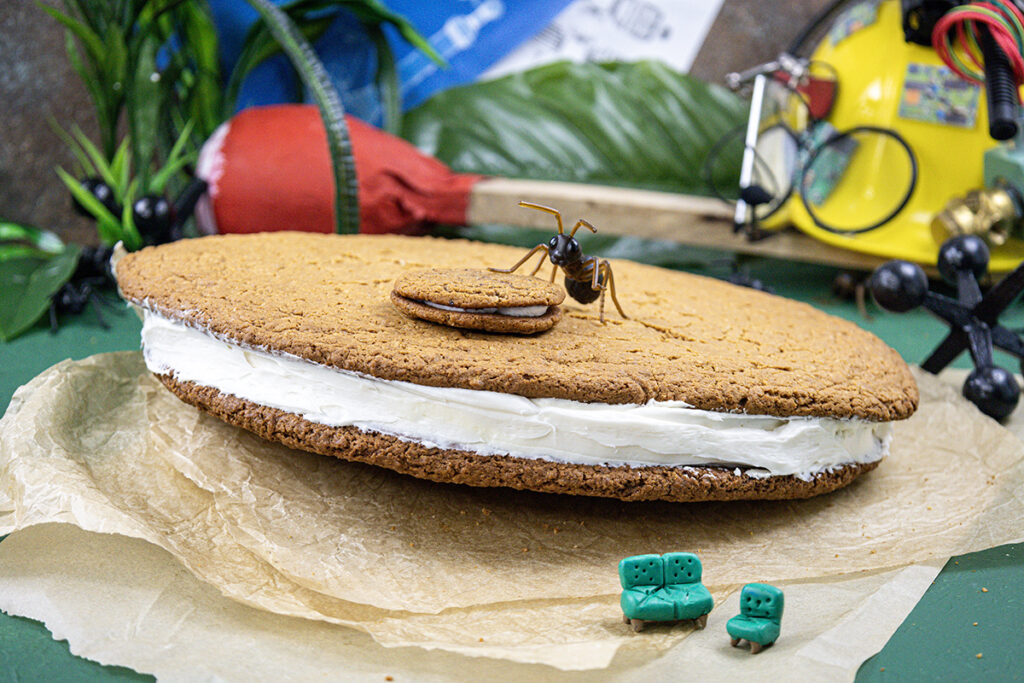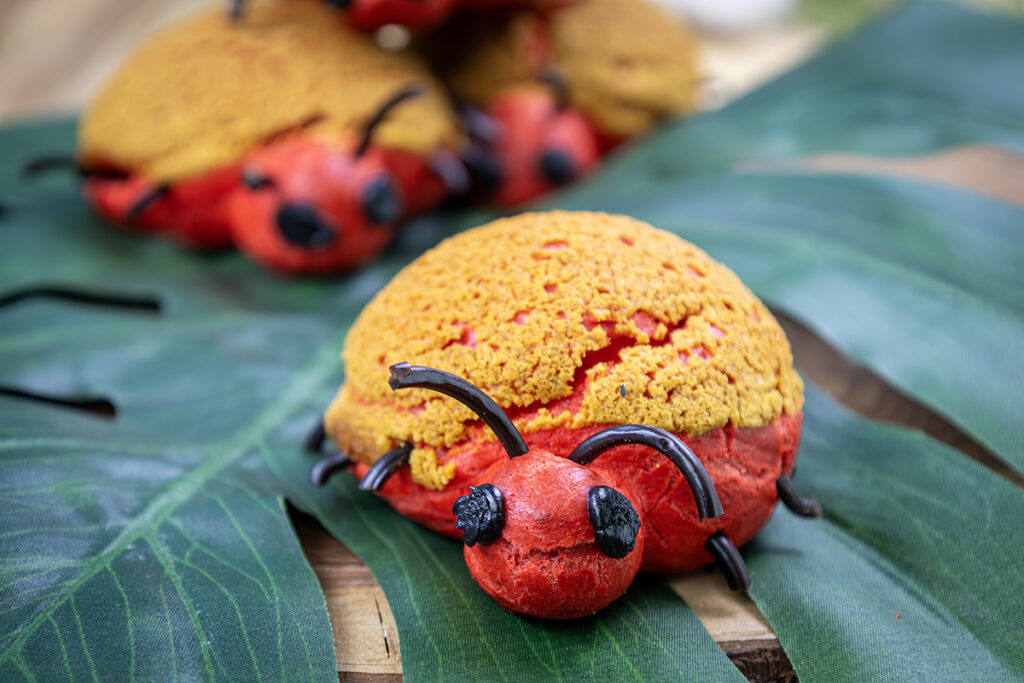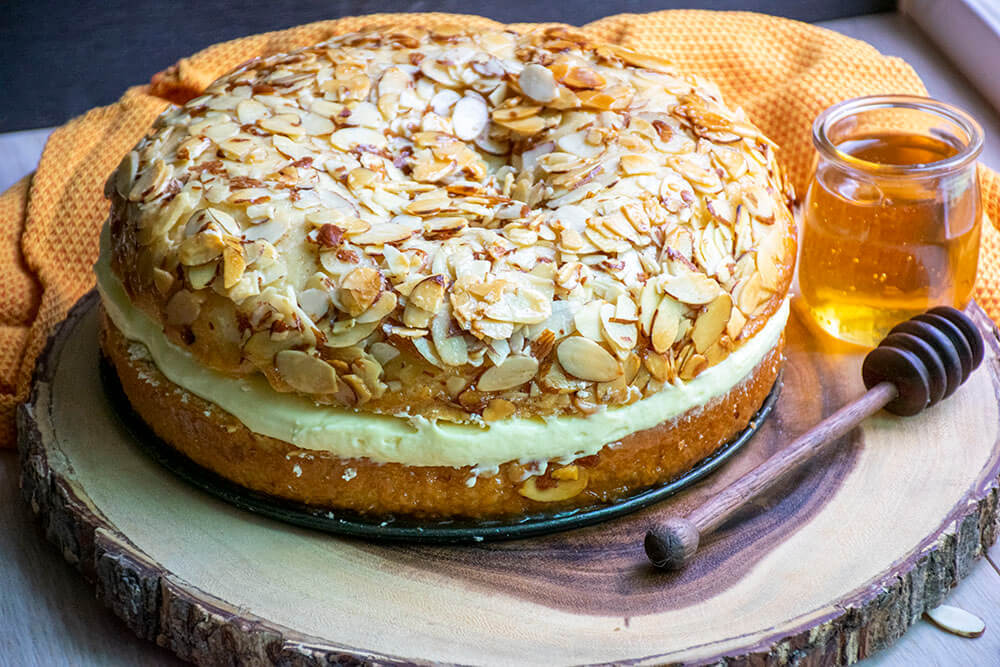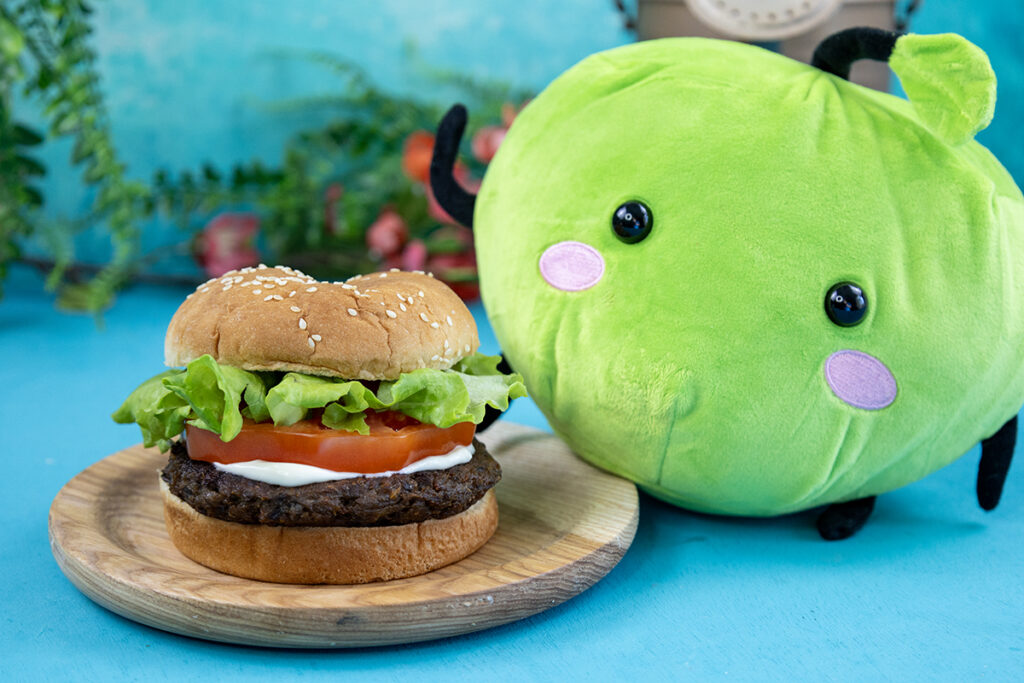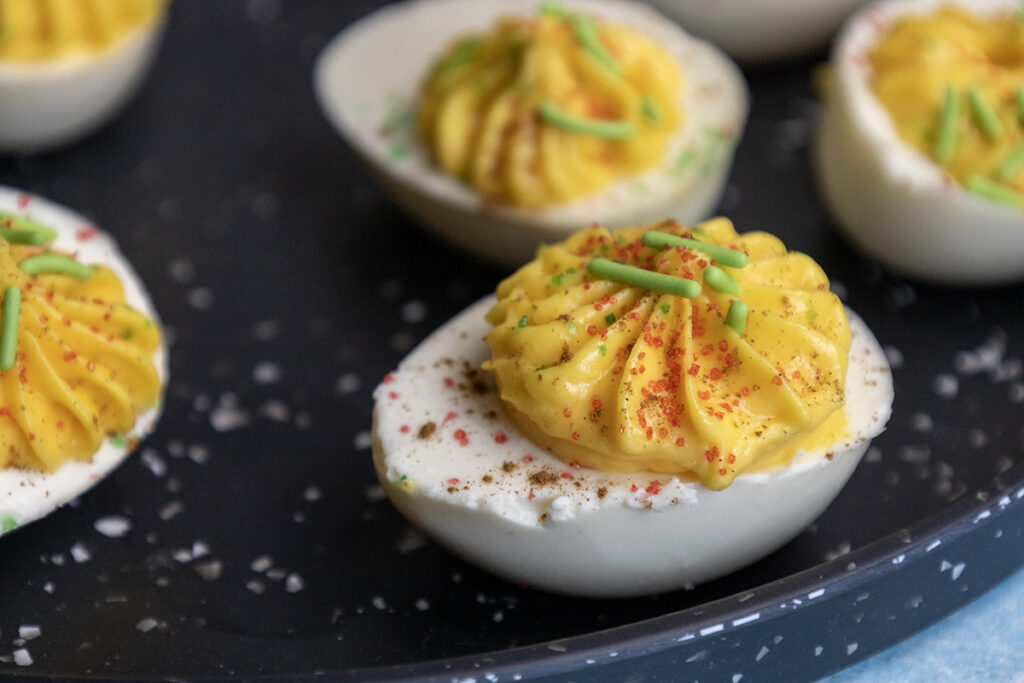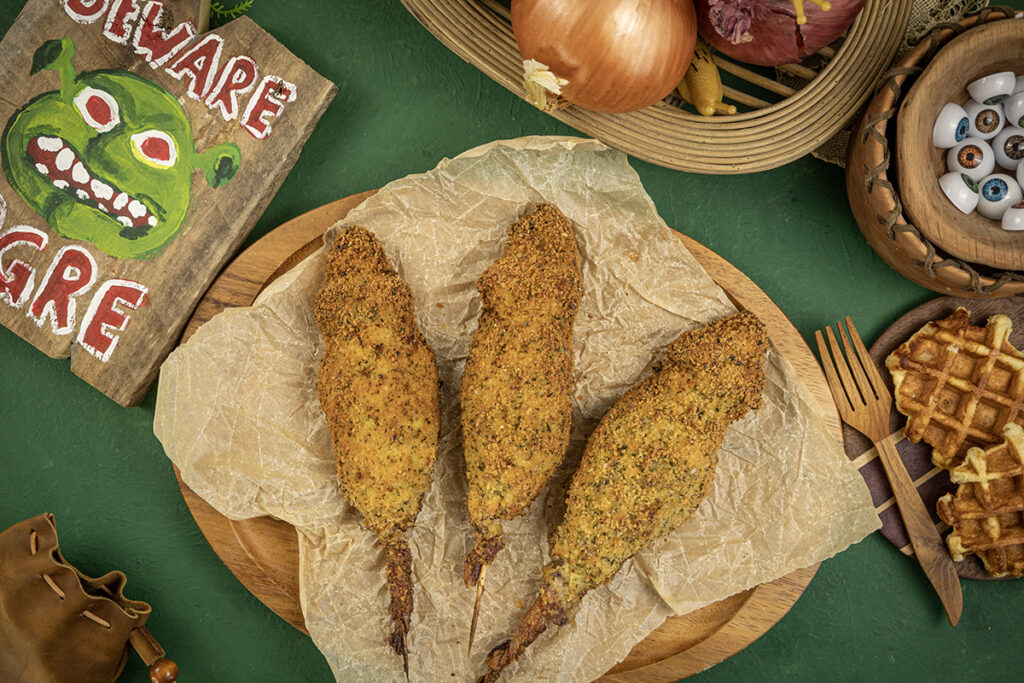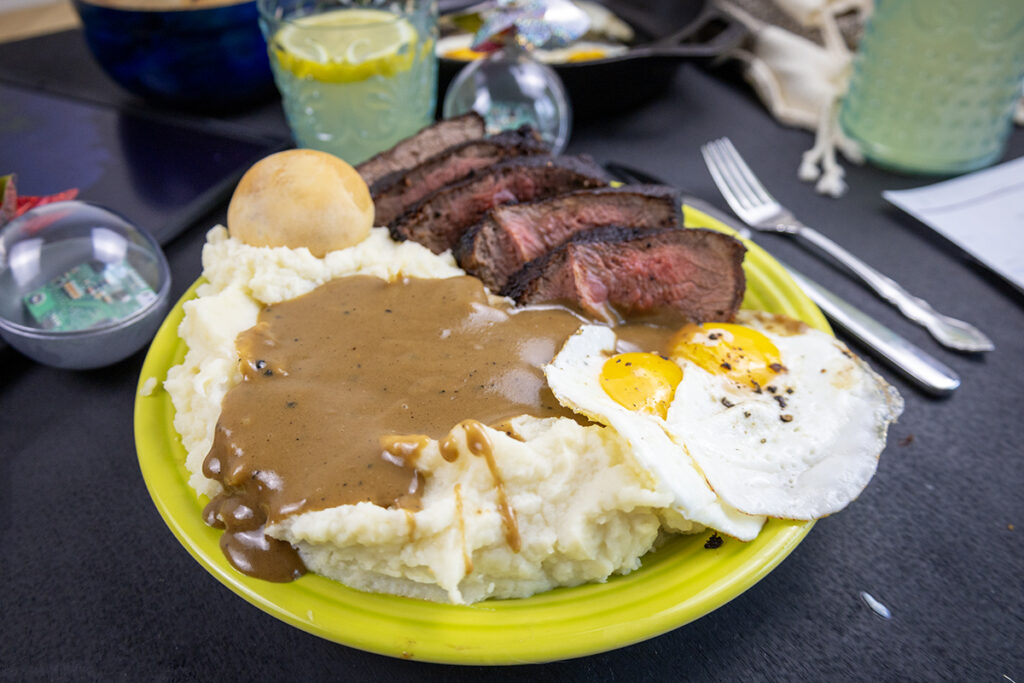Moana-Inspired Polynesian Pineapple Pork Belly Recipe
The Starving Chef is supported by Hungry People like you. When you make a purchase through an affiliate link on my site, I may earn a little bit of cash on the side (at no extra cost to you) to help keep my kitchen running. Read our disclosures here.
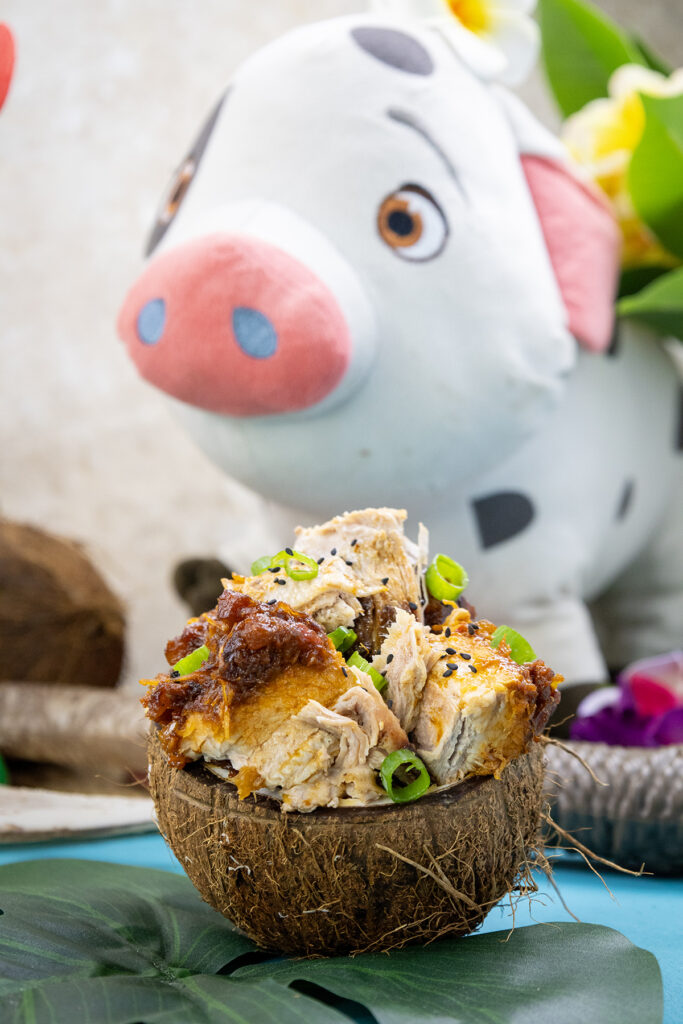
What’s Up, Hungry People?
Aloha, fellow food adventurers! Gather ’round as we embark on a culinary journey inspired by one of my all-time favorite movies, Moana.
Moana is an epic adventure about a young Polynesian girl named Moana who sets out on a daring voyage to save her island home. Teaming up with the charismatic demigod Maui, she braves the open ocean, encounters quirky creatures, and confronts her own fears and doubts. Along the way, Moana learns the importance of staying true to herself, embracing her heritage, and following her heart. With catchy songs, breathtaking animation, and a strong message of empowerment, Moana is a heartwarming and inspiring tale that’ll leave you feeling uplifted and ready to conquer your own adventures.
Just like Moana’s epic voyage across the open seas, this recipe promises to take your taste buds on a thrilling adventure filled with bold flavors and tropical delights. So, grab your aprons and get ready to channel your inner Moana as we whip up a dish fit for a demigod!
Here’s What You Need:
- Pork Belly: Provides the main protein base for the dish, ensuring a hearty and satisfying meal.
- Coconut Water: Adds a hint of tropical sweetness to the braising liquid, infusing the pork with island flavor.
- Coconut Palm Sugar: Sweetens the sauce with a touch of caramel richness, balancing out the savory elements.
- Galangal: Adds a unique citrusy and spicy flavor, reminiscent of traditional Polynesian cuisine.
- Garlic: Provides aromatic depth and flavor, enhancing the overall savory profile of the dish.
- Shaoxing Wine: Adds richness and depth of flavor to the sauce, complementing the pork belly perfectly.
- Black Vinegar: Balances the sweetness of the pineapple with a subtle acidity, creating a harmonious flavor profile.
- Ginger: Adds warmth and complexity to the dish, enhancing its overall depth of flavor.
- Lemongrass: Infuses the dish with a refreshing citrusy aroma, adding a bright and zesty element.
- Dark Sweet Soy Sauce: Provides sweetness and depth of color to the sauce, giving it a rich and glossy finish.
- Fish Sauce: Enhances umami and savory flavors, adding complexity to the overall taste.
- Ketchup: Adds a touch of sweetness and tanginess, rounding out the flavor profile of the sauce.
- Bay Leaves: Adds aromatic depth to the braising liquid, infusing the pork with subtle herbal notes.
- Crushed Pineapple: Adds natural sweetness and tropical flavor to the sauce, complementing the savory pork belly.
- Red Bell Pepper: Adds vibrant color and a hint of sweetness to the dish, enhancing its visual appeal.
- Tomato Paste: Thickens the sauce and adds richness, creating a luscious and flavorful coating for the pork belly.
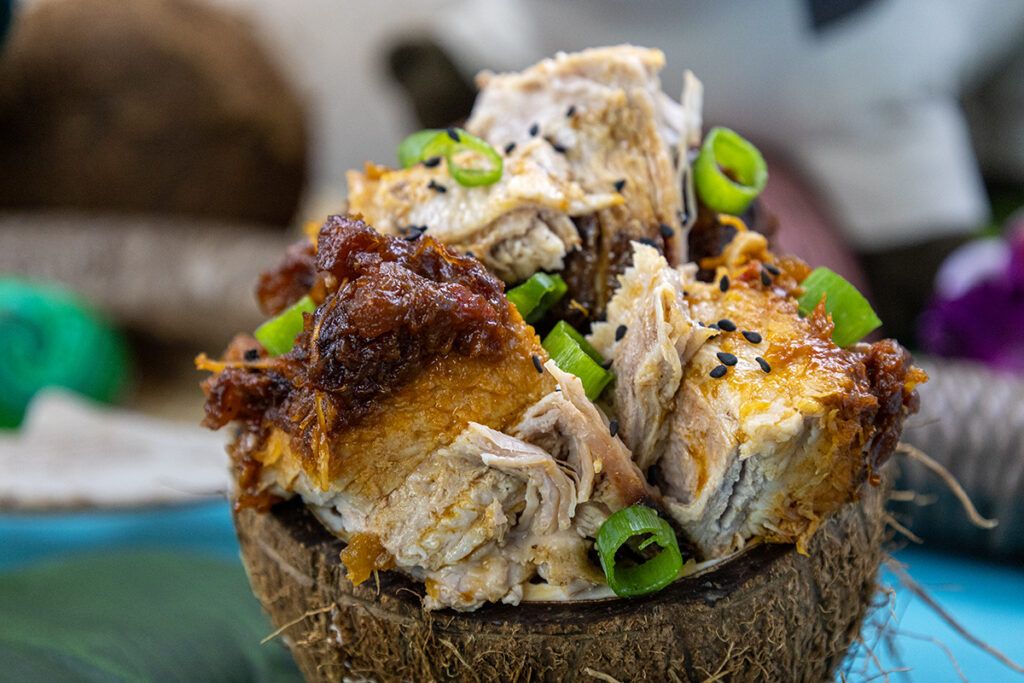
Let’s Cook!
First up, grab your trusty heavy-bottomed pot and heat it up over high heat. We’re talking sizzle-worthy here. Once it’s nice and hot, gently place your pork belly, skin side down, and let it work its magic. We want that skin to get beautifully browned and crispy, just like the shores of Motunui.
While the pork belly is doing its thing, it’s time to assemble our flavor bomb. Coconut palm sugar, galangal, garlic, ginger, lemongrass – these are the heroes of our sauce, infusing it with layers of aromatic goodness fit for a demigod. Splash in some Shaoxing wine, soy sauce, fish sauce, and coconut water to bring it all together in a symphony of flavor worthy of Moana’s epic journey.
Now, here’s the secret ingredient: patience. Let everything simmer away for a good hour and a half, allowing the flavors to meld and the pork belly to become tender and succulent – just like Moana’s unwavering determination on her quest to restore the heart of Te Fiti.
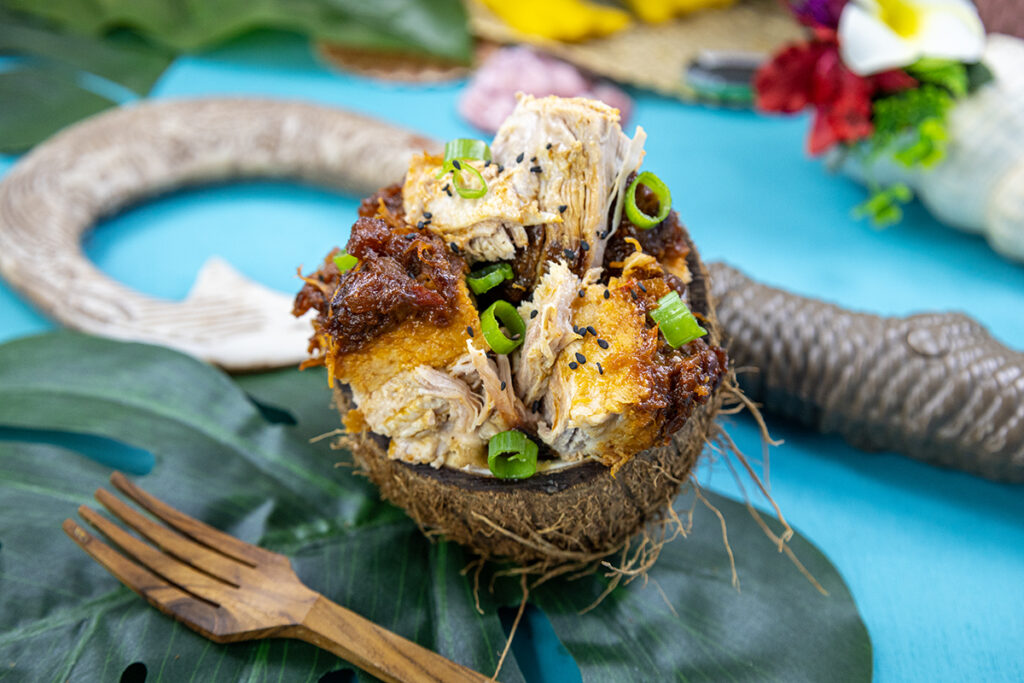
Once the pork belly is fork-tender, it’s time to crank up the flavor even more. Crushed pineapple, diced red pepper, and tomato paste join the party, turning our sauce into a thick, luscious barbecue-style glaze fit for a luau with Moana’s village.
Now, preheat your oven to 350°F and transfer your pork belly onto a baking sheet. Smother it in that glorious sauce, making sure every inch is coated in flavor – just like the way Moana embraces the ocean’s waves on her voyages. Don’t forget to tent it with foil – we want to trap in all that deliciousness while it bakes away in the oven.
Pop it in and let it work its magic for about 2 hours. Trust me, your kitchen will be filled with the most amazing aroma – consider this your invitation to drool, just like Maui around a plate of delicious pork.
Once it’s done, give it a few minutes to rest – I know, it’s tough to resist diving right in, but trust me, it’ll be worth it. Then, slice it up, serve it warm, and get ready for a flavor explosion like no other – just like the adventure Moana embarked upon to save her people.
Tips for Success:
- Searing the Pork Belly: Make sure your pot is hot enough to achieve a nice, golden sear on the pork belly.
- Adjusting the Sauce: Feel free to adjust the sweetness or acidity of the sauce to suit your taste preferences.
- Checking for Doneness: Use a meat thermometer to ensure the pork belly reaches an internal temperature of 200°F for optimal tenderness.
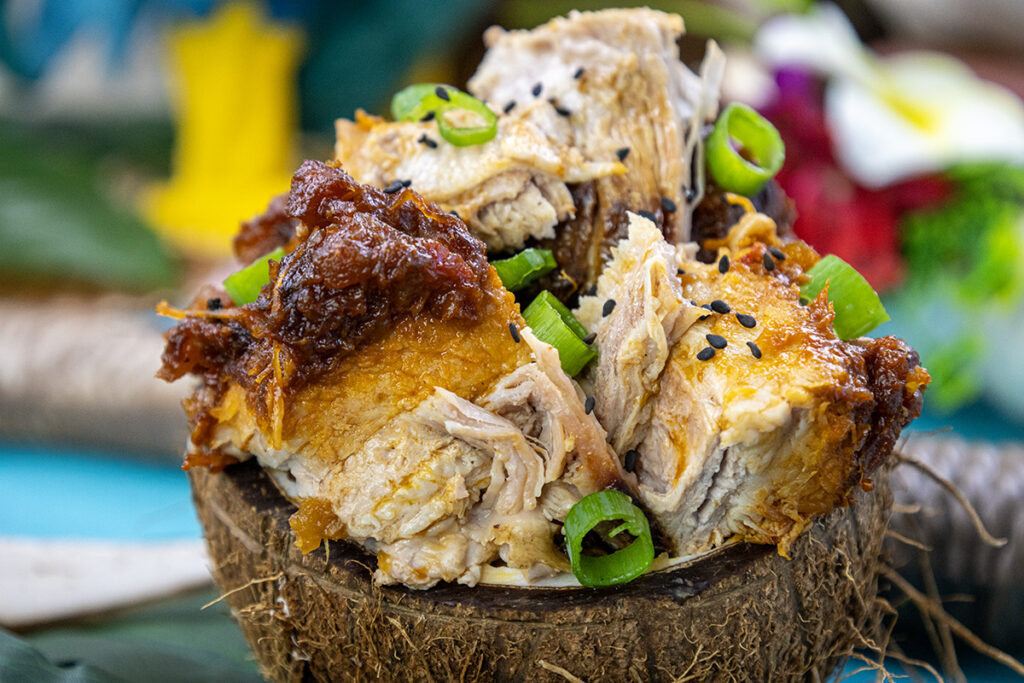
With each bite of this Polynesian pineapple pork belly, you’re not just enjoying a delicious meal – you’re experiencing a taste of adventure inspired by the vibrant world of Moana. From the first sizzle of the pork belly to the final savory-sweet explosion of flavor, every aspect of this recipe is a celebration of tropical delights and culinary creativity. So, as you savor the last delicious morsel, remember the spirit of Moana’s journey – bold, adventurous, and filled with the magic of the Pacific islands. Here’s to embracing the flavors of the tropics and embarking on culinary adventures that transport us to distant shores, one bite at a time.
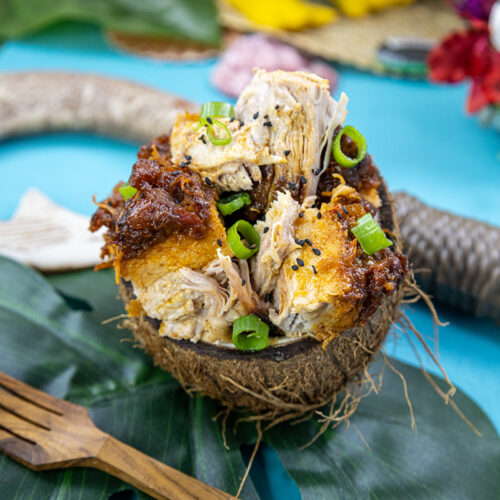
Pua’s Pork Belly from Moana
Equipment
- Dutch oven or heavy bottom pot
- wooden cutting board
- baking sheet
Ingredients
- 3 lbs pork belly skin on
- 1 cup coconut water
- 6-8 cups water
- ½ cup coconut palm sugar
- 1 tablespoon galangal
- 1 tablespoon garlic
- 1 cup shaoxing wine
- 4 tablespoons black vinegar
- 1 tablespoon ginger
- 1 tablespoon lemongrass
- 4 tablespoons dark sweet soy sauce
- 1 teaspoon fish sauce
- 2 bay leaves
- 40 oz crushed pineapple
- ½ cup red bell pepper chopped
- 1 cup tomato paste
Instructions
- Heat a heavy-bottomed pot over high heat. Add the pork belly skin side down and sear to remove any remaining hairs. Once the skin is browning, reduce the heat to medium-high.
- Add in the coconut palm sugar, galangal, garlic, ginger, lemongrass, Shaoxing wine, sweet dark soy sauce, fish sauce, and coconut water.
- Add enough water to cover the pork belly then place the bay leaves into the pot and bring to a simmer. Simmer for 15 minutes and use a strainer to skim off excess fat that floats to the surface. Then cover and continue to simmer for 1.5 hours.
- Remove the pork belly from the simmering liquid and set aside on a cutting board to dry. Remove the bay leaves from the liquid and discard.
- Bring the liquid to a rolling bubble. Add in the crushed pineapple, diced red pepper, and tomato paste. Stir well to combine and reduce heat to medium-low. Continue to simmer while stirring occasionally until the liquids have mostly cooked down to a barbecue sauce consistency.
- Preheat the oven to 350°F. Place the pork belly skin side up on a baking sheet lined with foil or parchment. Spread the sauce over the top of the pork belly so that it is evenly covered. Tent the pork belly under foil and place it into the preheated oven. Bake until the internal temperature reaches 200°F – it needs to reach this temp to render down the fat and make the pork tender – about 2 hours in the oven.
- Allow the pork belly to rest at room temperature for 15 minutes before cutting. Serve warm and enjoy!



























